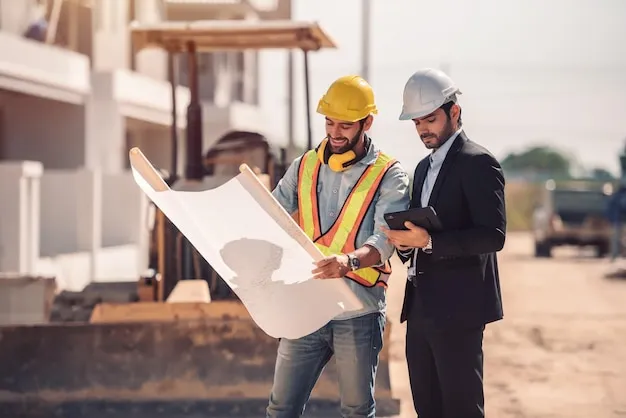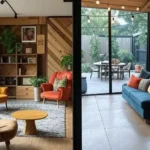Dod you recently heard about 3D-printed homes? Ah, it’s yet another remarkable launch by the advancements of technology. The name can pop many ideas into your mind – but let’s see what 3D-oriented homes are. Construction has met a whole new era. They are faster to build, and you can get more design flexibility compared to traditional houses. This technology uses large-scale 3D printers that layer concrete or other materials. It will create walls and structures in a fraction of the time that is required for traditional building methods.
How 3D-Printed Homes Work?
The process will require a digital blueprint. It guides the printer in layering materials. Rather than the conventional bricks, the printer has a special concrete mix or other building materials. This implies that you dont need many laborers to work. Ultimately, the labor costs would be too low! A home that will take months if built with traditional methods can be completed in a few days using 3D printing.
Is it Cost Efficient?
Do you know why people love 3D-printed homes? Well, it is a because of their cost-effectiveness. Conventional construction demands large amounts of materials and labor. The costs of construction are immensely high. 3D printing will utilize only the necessary material in an attempt to cut back the waste and expenses. Some companies have successfully printed homes for under $10,000. Simply, it’s an attractive option for low-income housing projects.
Speed is another plus point. Home construction has a plethora of stages, including foundation work, framing, and finishing and furnishing. 3D printing will make this procedure quite simple by building most of the structure in a single phase. Sometimes, walls can be completed in less than 24 hours. This rapid construction is incredibly helpful for areas that are affected by natural disasters, where rebuilding efforts must be super-fast.
Design Options
Design flexibility is another reason why people praise 3D homes. Traditional construction is dependent on pre-set designs and standard building materials. 3D printing has permitted architects to experiment with complex shapes and structures. Above all, this occurs without an increase in charges. Curved walls and complicated layouts can be created with convenience. It is possible to design energy-efficient homes that improve airflow and insulation.
Environmental Plus Points
Environmental issues are a burning question of this modern era. The building methods that builders rely on will generate a massive amount of waste. They use materials that harm the environment. 3D-printed homes cut back on this waste by using only the necessary materials. Some companies are even experimenting with recycled materials. It can further decrease the carbon footprint. The energy efficiency of these homes will fuel our sustainability efforts as well-designed structures demand less heating and cooling.
Do you do that when the construction industry is one of the largest contributors to global carbon emissions? 3D-printed homes can eradicate this negative impact. They will decrease waste and use sustainable materials. This technology is a way to build more environmentally friendly homes.

What are the Issues and Limitations?
Despite the advantages, you can find multiple hurdles. The technology is still in its early stages, and many governments do not have building codes that outline 3D-printed structures. There is a strong demand for additional testing and certifications before these homes can be approved for permanent living. Another obstacle is the limitation of materials. Most 3D printers use concrete. Researchers are trying to find other options that are durable and harmless for the planet.
Even though automation decreases labor costs, it also brings up concerns about job losses in the construction industry. Fewer workers are needed for 3D-printed homes. This has an influence on employment in traditional building sectors. Yet, you can find an increase in job opportunities in the areas of machine operation and software design.
Applications in the World
Many real-world projects prove that 3D-printed homes have gone beyond a mere concept or plan on paper. In Mexico, an entire community of 3D-printed homes was built to provide shelter for low-income families. In the United States, companies have completed projects that are incredible proof of future large-scale developments. Developing country’s technology is making immense efforts to sort out the housing requirements with these projects.
What Materials Are Used in 3D-Printed Homes?
3D-printed homes mostly take origins from the specialized construction materials that are designed for strength and power.. The most common material is a concrete-based mixture. It will grant structural integrity. Plus, it is easy to extrude through large-scale 3D printers. This concrete mix is reinforced with additives such as fibers, or other recycled materials to improve flexibility. This keeps the issues from cracking away.
Along with concrete, some companies try to find alternative materials to improve sustainability. Recycled plastics and even earth-based materials such as clay and soil mixtures have been tested for 3D printing. These options can further lower the environmental impact. It will make housing more accessible in areas where concrete is expensive.
Here is another worth mentioning trend: the use of geopolymer-based cement. This emits fewer carbon emissions compared to traditional Portland cement. Some researchers are also working on biodegradable and self-healing materials that can increase the lifespan of 3D-printed homes.
The selection of materials is reliant on numerous attributes such as climate, and regulatory requirements. Even though concrete is the gold standard of this sector, future developments may witness multiple other materials that are sustainable and energy-efficient. Thus, these 3D homes can be more eco-friendly and cost-effective.
Are 3D-Printed Homes Safe and Durable?
Safety and durability are major concerns when it comes to 3D-printed homes. Despite being a relatively new technology, these homes have proven to be strong, resilient, and comparable to traditional construction in many aspects. Most 3D-printed homes use reinforced concrete, which has been used in the construction industry for decades due to its durability and ability to withstand harsh weather conditions.
One key advantage of 3D-printed homes is their structural efficiency. The layered printing technique creates seamless walls, reducing weak points commonly found in traditional brick-and-mortar construction. This improves resistance to natural disasters such as earthquakes and hurricanes. Some designs also include insulation layers and reinforced frameworks to enhance durability and energy efficiency.
However, there are challenges. Since the technology is still evolving, long-term durability studies are limited. Factors like material degradation over time and exposure to extreme temperatures are areas of ongoing research. Additionally, building codes in many regions have yet to fully adapt to 3D-printed construction, which can slow down adoption.
Despite these concerns, the rapid advancements in materials and construction techniques suggest that 3D-printed homes will continue to improve in strength, safety, and longevity, making them a viable housing option for the future.
3D-Printed Homes: Are They Worth it?
The future of 3D-printed homes looks promising. As technology improves, costs will decrease further, making these homes even more accessible. Governments and construction companies are beginning to recognize the potential of this method and are working on updating regulations to allow more widespread adoption. Research continues to improve building materials and increase the durability of 3D-printed structures.
3D-printed homes are no longer a futuristic idea. They are being built today, providing affordable, durable, and sustainable housing solutions. As technology advances, more people will have access to cost-effective and innovative living spaces. The way homes are built is changing, and 3D printing is at the forefront of this transformation.






[…] Everything You Need to Know About 3D-Printed Homes […]